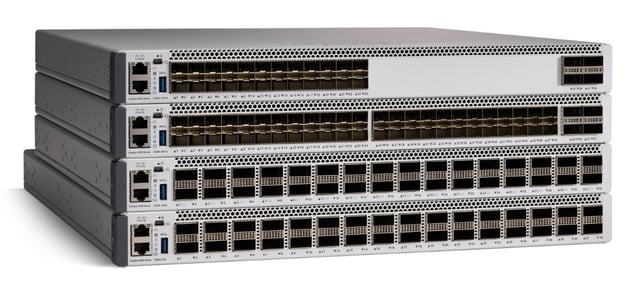There are many businesses today that have chosen Cisco Catalyst models to provide core/distribution layer services to their infrastructure. Notable models include Cisco’s catalyst 4500, 6500, and 6880 models. A new family of Catalyst have been recently rolled out to spearhead the next generation campus requirements where customers want to have “smart” campuses with many more analytical features and to be future ready. With the new Catalyst 9000 series, Cisco has leveraged the programmability in their IOS-XE software and implemented UDAP 2.0 features. The 9000 series model is really an enhanced version of its family switches that being the 4500 chassis and 3850. Currently, the Catalyst 9k family is comprised of the 9200, 9300, 9400, and 9500 series models.
As mentioned above, the Catalyst 9500 series is meant for the new generation networks which includes to support security, mobility, IOT, and cloud-based traffic. In terms of specifications, the 9500 is better in many categories, that being a better CPU architecture(x86) and increases in SDRAM, internal flash capacity, and external storage capacity to name a few.
Looking over the chassis bandwidth of both switches, the Cisco 4500X will provide up to 800Gbps of overall bandwidth on the chassis, while the Catalyst 9500 will provide an astounding 960 Gbps of overall bandwidth capacity on the chassis. As both switches support 10G, 25G, 40G and 100G ports, the maximum ports on the Catalyst 4500X is 40 ports while in the 9500 is 48 ports, in terms of 10G density.
With industry trends such as Advanced Security, The 9500 series also comes with Native Flexible NetFlow, Cisco TrustSec/SGT(wired/wireless), Native MACsec-256 encryption, predictive threat analysis, and something really cool called encrypted threat analytics, which is detecting malware that is hiding in encrypted traffic, without decrypting it! The 4500 series model does not support any of these features with the exception of Cisco’s TrustSec/SGT(wired networks only). Pivoting to BOYD/Mobility, the 4500 is again outshined by the 9500 series with features like fabric-enabled wireless, UADP ASIC for wired-wireless convergence, application visibility and hierarchical wireless QOS.
The Catalyst 9000 family also has a powerful software solution built for the hardware called Cisco DNA. If you haven’t heard about Cisco DNA, it stands for Cisco Digital Network Architecture. It is Cisco's architecture for enterprise networks – across the campus, branch, WAN, and extended enterprise. It provides an open, extensible, and software-driven approach that makes the network simpler to manage and more agile and responsive to business needs. This new architecture is something the Catalyst 4500X cannot join or be part of. The Catalyst 9K models are the first in line to proposition the Cisco IOS XE and Cisco DNA subscription-based software licenses, permitting customers to buying the qualities and abilities they need. If your business is looking to replace current core 4500x switches and leverage advanced analytics to proactively monitor, troubleshoot, and optimize the network, one should consider the Catalyst 9500 series model. With this advanced fabric solution in the campus named SD-Access, Cisco 4500X is not able to be the part of Cisco SD-Access fabric in LAN networks while Catalyst 9500 is the edge core device used in the SD-Access as a fixed core solution. The Catalyst 9500 series is Cisco’s lead purpose-built fixed core and aggregation enterprise switching platform, built for security, IoT, and cloud.
Author: Rob Oliveira, Sr. Network Architect.

